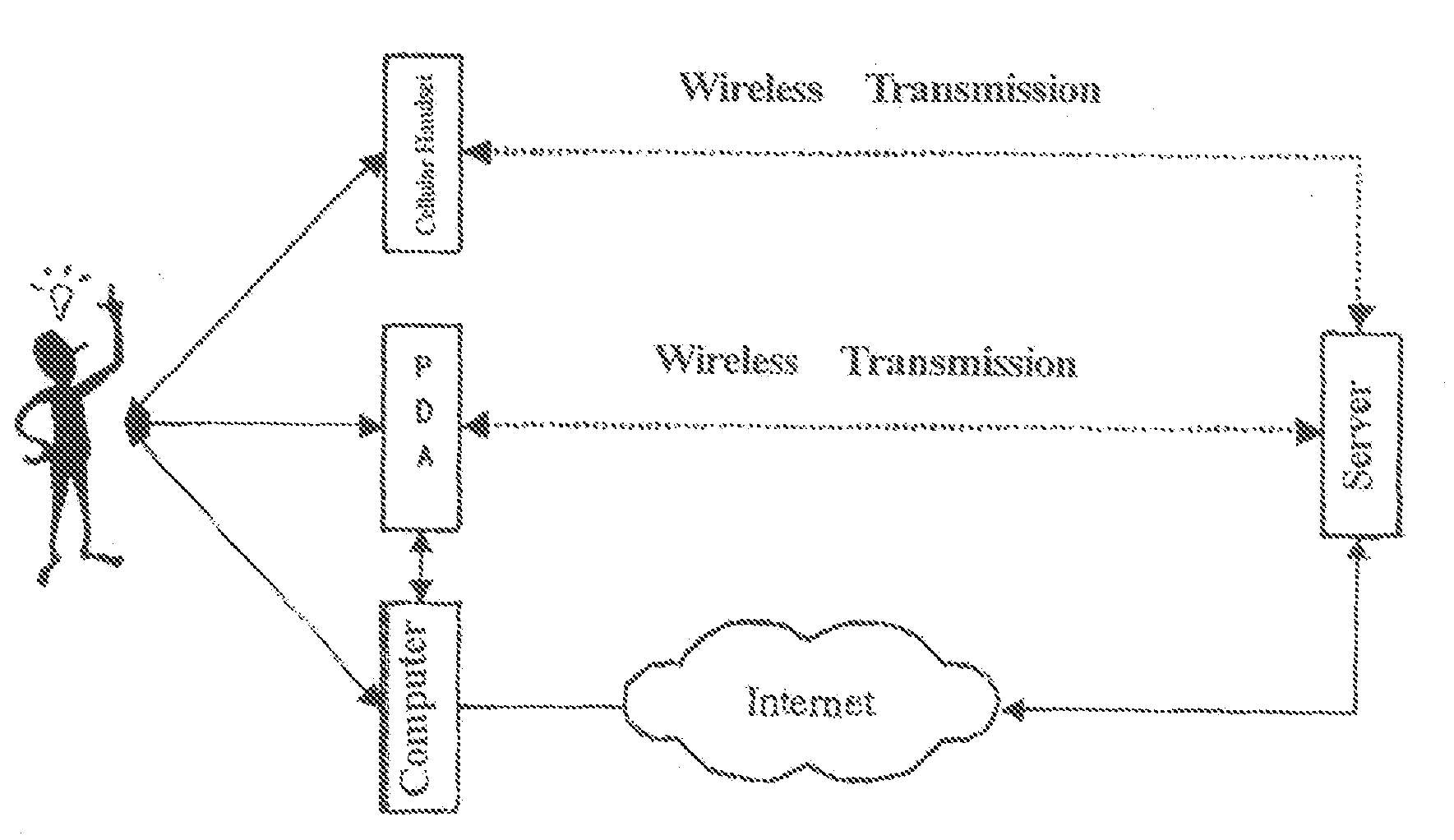Search method for discovery of individual best study period cycle
a research method and study period technology, applied in the field of learning methods, can solve the problems of ineffectiveness, ineffectiveness, and inability to find the best study period for each individual,
- Summary
- Abstract
- Description
- Claims
- Application Information
AI Technical Summary
Benefits of technology
Problems solved by technology
Method used
Image
Examples
first embodiment
[0030] To determine the waiting time (i.e., the period of the review cycle) for a stage X of the flow of FIG. 4, FIG. 5 is a schematic diagram showing the present invention. The notations used in FIG. 5 are as follows:
NotationDescriptionThe memorization state of a learning focus when thelearner enters the stage X.The waiting time of die stage XThe review conducted in stage X
[0031] As illustrated, within stage X, the memorization state of a learning focus is and a review is conducted after the waiting time During the review, the questions associated with the learning focus are used for evaluation. If the result of evaluation for all learning focuses is “success ” (S), the flow continues to the next stage; if the result for all learning focuses is “failure” (F), the memorization state remains unchanged and another review is conducted after the waiting time With this process, a learner obtains periodic reviews in a stage so as to help moving the learning focuses from short-term me...
second embodiment
[0034]FIG. 6 is a schematic diagram showing the present invention. The notations used in FIG. 6 are as follows:
NotationDescriptionThe memorization state of a learning focus when thelearner enters the stage X.The waiting time of the stage XThe review conducted in stage XThe memorization state of a learning focus after thelearner fails the evaluation.The waiting time for another review under thememorization state The review conducted under the memorization state
As illustrated, within stage X, the memorization state of the learning focus is and a review is conducted after the waiting time During the review, the questions associated with the learning focus are used for evaluation. If the result of evaluation of all learning focuses is “success” (S), the flow continues to the next stage; if the result of all learning focuses is “failure” (F), the memorization state becomes and another review is conducted after the waiting time
[0035] While under the memorization state if the revie...
third embodiment
[0037]FIG. 7 is a schematic diagram showing the present invention. The notations used in FIG. 7 are as follows:
NotationDescriptionThe memorization state of a learning focus when thelearner enters the stage X.The waiting time of the stage XThe review conducted in stage XThe memorization state of a learning focus after thelearner fails the evaluation.The waiting time for another review under thememorization state The review conducted under the memorization state
As illustrated, within stage X, the memorization state of the learning focus is and a review is conducted after the waiting time During the review, the questions associated with the learning focus are used for evaluation. If the result of evaluation of all learning focuses is “success” (S), the flow continues to the next stage; if the result of all learning focuses is “failure” (F), the memorization state becomes and another review is conducted after the waiting time
[0038] While under the memorization state if the revie...
PUM
 Login to View More
Login to View More Abstract
Description
Claims
Application Information
 Login to View More
Login to View More - R&D
- Intellectual Property
- Life Sciences
- Materials
- Tech Scout
- Unparalleled Data Quality
- Higher Quality Content
- 60% Fewer Hallucinations
Browse by: Latest US Patents, China's latest patents, Technical Efficacy Thesaurus, Application Domain, Technology Topic, Popular Technical Reports.
© 2025 PatSnap. All rights reserved.Legal|Privacy policy|Modern Slavery Act Transparency Statement|Sitemap|About US| Contact US: help@patsnap.com



